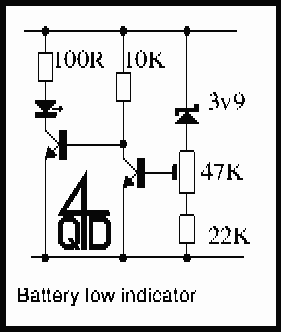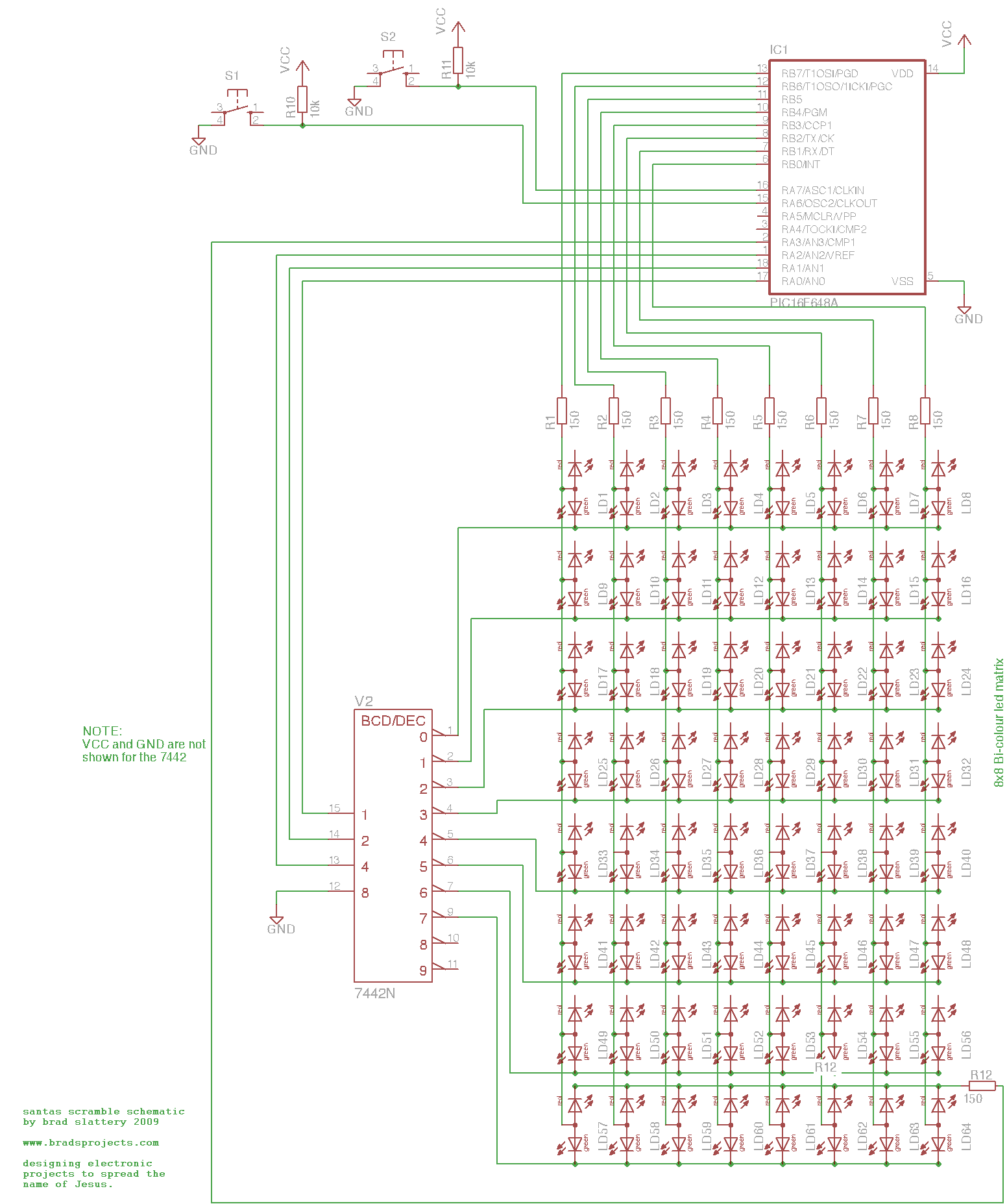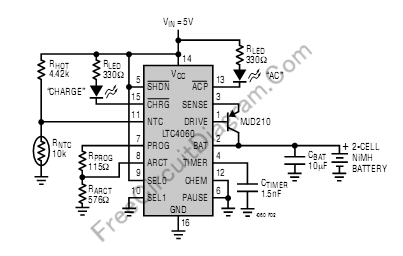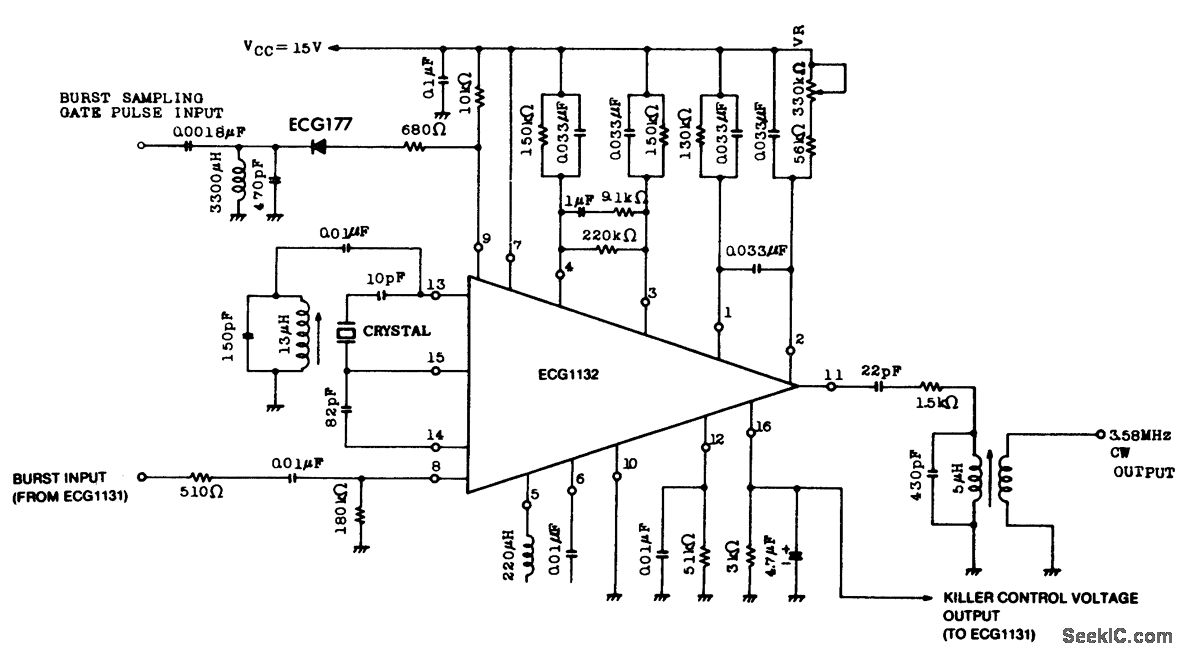
car and motorcycle battery tester
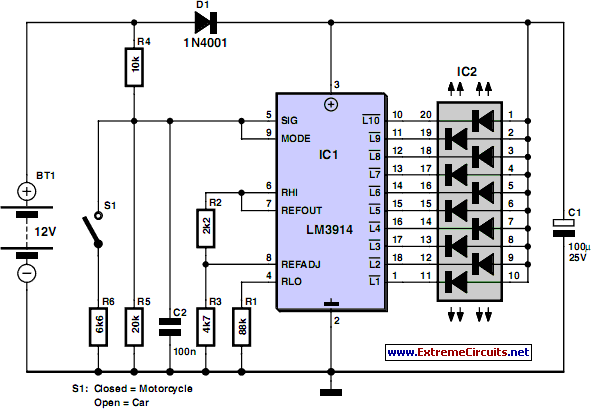
Camping today often requires bringing various electronic devices for daily use or entertainment. Typically, a charged lead-acid battery and a power inverter are utilized to ensure a well-organized holiday where family members can enjoy their electronic gadgets. It is crucial to monitor the capacity of rechargeable lead-acid batteries to determine if they need recharging during trips. This same circuit can also be beneficial for checking the status of 12 V (car) or 6 V (motorcycle) batteries during car or motorbike journeys.
The described circuit serves as a battery monitoring system designed to assess the charge level of lead-acid batteries commonly used in camping and automotive applications. The circuit typically incorporates a microcontroller or an analog voltage divider to measure the battery voltage. The measured voltage is then compared against predefined thresholds to determine the state of charge (SoC) of the battery.
For a 12 V lead-acid battery, the circuit may include a voltage regulator to ensure that the microcontroller operates within its specified voltage range. The voltage reading from the battery is converted into a digital value using an Analog-to-Digital Converter (ADC), allowing for precise monitoring. The microcontroller can be programmed to display the battery status on an LCD screen or through LED indicators, providing clear visual feedback to the user.
In addition, the circuit may feature an alarm system that triggers when the battery voltage falls below a critical threshold, signaling the need for recharging. This is particularly useful during camping trips, where access to charging facilities may be limited. For motorcycle applications, the same principles apply, with adjustments made for the lower 6 V battery system.
Overall, this battery monitoring circuit enhances the convenience and reliability of using lead-acid batteries in outdoor activities, ensuring that users can maintain their electronic devices without the worry of unexpected power loss.Going camping nowadays involves taking lots of electronic equipment whether for day to day running or for fun and entertainment. Most of the time a charged lead acid battery and a power inverter would be used to ensure a smoothly organized holiday where ideally the missus and the children cheerfully use their electric and electronic gear!
With rechargeable lead-acid batteries it s invariably useful - if not essential - to determine whether the power source you re hauling along on your travels is losing capacity and needs to be topped up. The same circuit would also come in handy when going on a car or motorbike trip as it can check the status of a 12 V (car) or a 6 V (motorcycle) battery..
🔗 External reference
The described circuit serves as a battery monitoring system designed to assess the charge level of lead-acid batteries commonly used in camping and automotive applications. The circuit typically incorporates a microcontroller or an analog voltage divider to measure the battery voltage. The measured voltage is then compared against predefined thresholds to determine the state of charge (SoC) of the battery.
For a 12 V lead-acid battery, the circuit may include a voltage regulator to ensure that the microcontroller operates within its specified voltage range. The voltage reading from the battery is converted into a digital value using an Analog-to-Digital Converter (ADC), allowing for precise monitoring. The microcontroller can be programmed to display the battery status on an LCD screen or through LED indicators, providing clear visual feedback to the user.
In addition, the circuit may feature an alarm system that triggers when the battery voltage falls below a critical threshold, signaling the need for recharging. This is particularly useful during camping trips, where access to charging facilities may be limited. For motorcycle applications, the same principles apply, with adjustments made for the lower 6 V battery system.
Overall, this battery monitoring circuit enhances the convenience and reliability of using lead-acid batteries in outdoor activities, ensuring that users can maintain their electronic devices without the worry of unexpected power loss.Going camping nowadays involves taking lots of electronic equipment whether for day to day running or for fun and entertainment. Most of the time a charged lead acid battery and a power inverter would be used to ensure a smoothly organized holiday where ideally the missus and the children cheerfully use their electric and electronic gear!
With rechargeable lead-acid batteries it s invariably useful - if not essential - to determine whether the power source you re hauling along on your travels is losing capacity and needs to be topped up. The same circuit would also come in handy when going on a car or motorbike trip as it can check the status of a 12 V (car) or a 6 V (motorcycle) battery..
🔗 External reference

